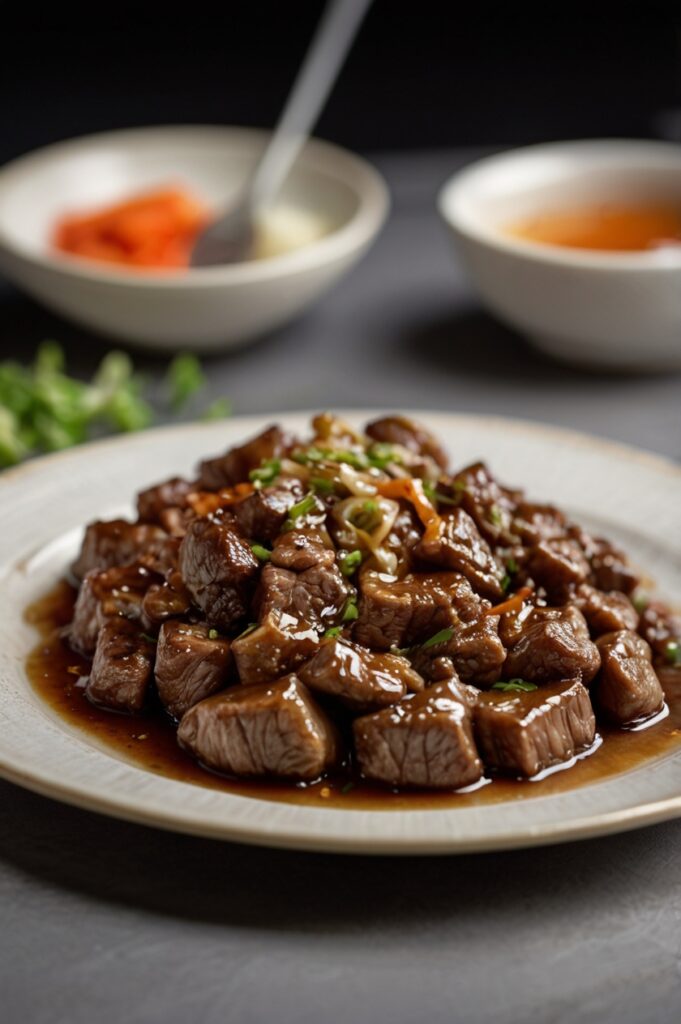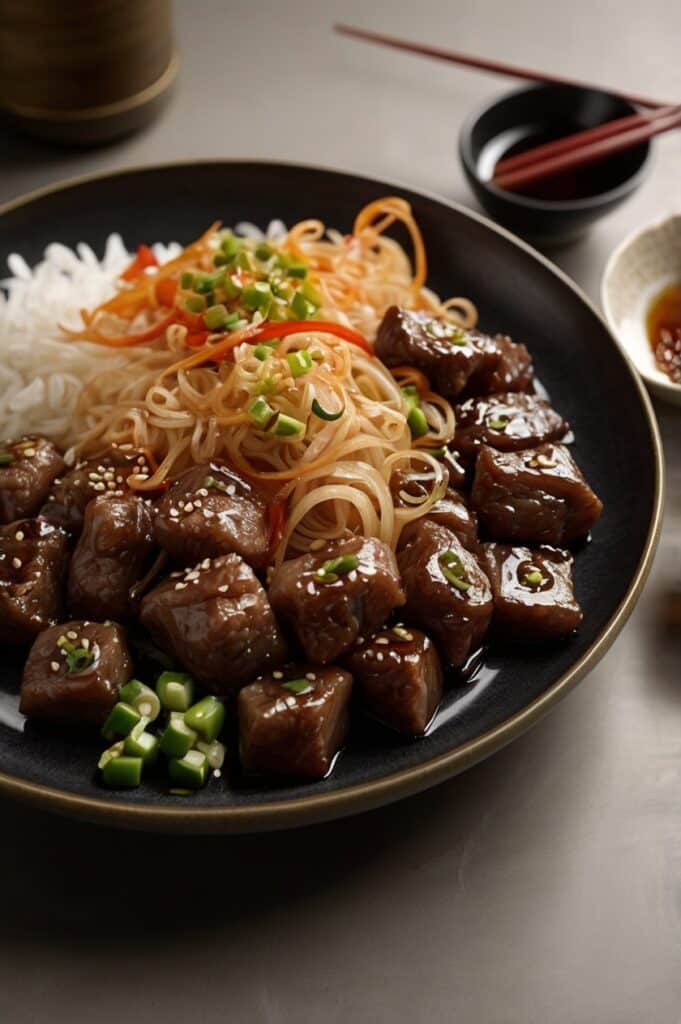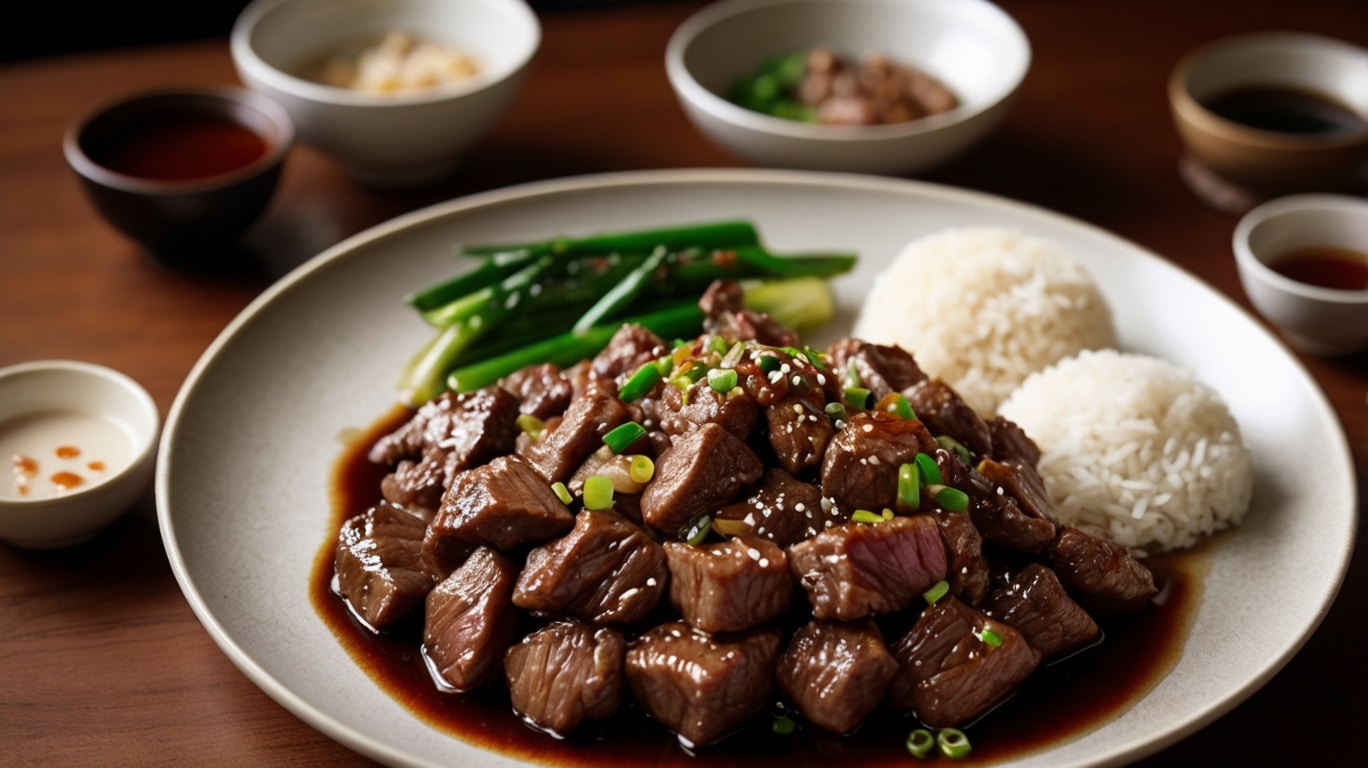Chinese Beef and Onion Stir Fry — it’s a whirlwind of flavors, fast enough to save your dinner on hectic nights but still packed with enough punch to satisfy the soul. Ever had a weeknight where you just wanted something quick yet not dull? This dish nails that balance with its caramelized onions, tender beef slices, and that umami-rich sauce that clings to every morsel. It’s not just another stir fry; it’s a gateway to authentic Chinese home cooking that’s deceptively simple but deeply rewarding.
Chinese Beef and Onion Stir Fry is special because it’s all about timing and technique. It calls for a quick sear on high heat, locking in juices and flavors, and caramelizing onions just right so they melt sweetly into the savory beef. It uses some classic Chinese pantry staples — soy sauce, Shaoxing wine, a bit of sugar — that together create that glossy, irresistible glaze. Plus, the onion’s natural sweetness perfectly counters the beef’s robust character. This ain’t your everyday beef dish; it’s a flavor bomb that shows how simple ingredients become extraordinary with the right moves.
Ingredients & Substitutions
Chinese Beef and Onion Stir Fry needs some simple, quality ingredients to sing:
- Beef: flank steak or sirloin work best—thinly sliced against the grain for tenderness.
- Onions: yellow onions are classic for their sweetness, but white or red onions also bring unique sharpness.
- Garlic: minced, for that punch.
- Ginger: freshly grated is non-negotiable—dried just doesn’t cut it here.
- Soy sauce: both light and dark soy are great, but light soy sauce is key for saltiness without overpowering.
- Shaoxing wine: or dry sherry if unavailable; it adds depth and a subtle aroma.
- Cornstarch: for the velvety coating on the beef.
- Sugar: just a pinch to balance.
- Sesame oil: for that toasty finish.
Substitutions? If you’re gluten-sensitive, tamari replaces soy sauce beautifully. No Shaoxing? A splash of dry sherry or even a bit of mirin can do the trick. Want to veganize it? Use thinly sliced king oyster mushrooms instead of beef, and swap oyster sauce for mushroom soy sauce. But, pro tip, fresh ginger is where you never want to skimp — it’s the soul of the dish, really.
When picking your beef, flank steak shines because it has that perfect chew and absorbs marinade well. Avoid fatty cuts; they just weigh the dish down. Fresh onions with firm texture and no bruising make all the difference, trust me.

Step-by-Step Instructions
Chinese Beef and Onion Stir Fry kicks off with prepping your beef. Slice it paper-thin against the grain—this is crucial for tenderness. Toss it in a marinade: soy sauce, Shaoxing wine, a pinch of sugar, and cornstarch. Let it rest 10-15 mins. The cornstarch is the magic trick here—it creates a slick coating that seals juices and helps the sauce cling.
Heat your wok or a heavy skillet until screaming hot. Add oil with a high smoke point (like peanut or vegetable). Toss in the beef in batches—don’t overcrowd! Overcrowding means the beef steams rather than sears. You want that Maillard reaction—the golden, crispy bits that explode with flavor.
Once the beef is browned but not fully cooked, remove it. Toss in onions and stir-fry until translucent and just beginning to caramelize. Garlic and ginger follow—don’t burn them! Burnt garlic? Nah, it turns bitter. Bring back the beef, add soy sauce and a touch of sugar, stir everything so the sauce thickens and coats.
For spice lovers, toss in sliced fresh chili or a splash of chili oil. Want crunch? Add a handful of sliced scallions or bell peppers right at the end.
Common mistakes? Overcooking beef makes it rubbery. Under-seasoning leaves it bland. Using old soy sauce kills brightness. Don’t skimp on heat; a hot pan is your best friend here.
Cooking Techniques & Science
Chinese Beef and Onion Stir Fry leans heavily on high-heat wok cooking. The intense heat causes the Maillard reaction — a chemical reaction between amino acids and reducing sugars — that browns meat and onions, developing complex flavors and aromas you can almost taste through your nose.
Searing beef quickly on high heat locks moisture inside, so the meat stays juicy, not tough. Adding cornstarch to beef acts like a velvety armor. It prevents moisture loss during cooking and thickens the sauce when combined with soy and liquids.
Stir-frying is a high-heat, fast-cooking technique originating from Chinese wok culture, designed to preserve texture and color. The shape of the wok funnels heat to the bottom, allowing rapid cooking with minimal oil. It’s a dance — constant movement avoids burning while ensuring every ingredient cooks evenly.
Shaoxing wine is a traditional Chinese cooking wine with a subtle sweetness and nuttiness. It tenderizes meat and adds layers of aroma that simple vinegar or wine can’t replicate. Missing it? Your stir fry loses some of its character.
Using a wok is ideal, but a heavy-bottom skillet works too — just make sure it’s preheated well. A cold pan means soggy, steamed beef.
Serving & Pairing Suggestions
Chinese Beef and Onion Stir Fry loves company on a plate. Serve it piping hot over steamed jasmine rice or fluffy white rice. The neutral rice absorbs that sticky, savory sauce like a champ.
Presentation? Pile the stir fry high in the center, sprinkle thinly sliced scallions or fresh cilantro for pops of green. A drizzle of toasted sesame oil right before serving gives it a nutty finish.
Sides? Think light and fresh—simple stir-fried bok choy, garlic green beans, or a crunchy cucumber salad balance the richness perfectly.
Drinks? A crisp, cold lager or a slightly sweet Riesling can cut through the savory notes beautifully. Or keep it traditional with jasmine tea.

Conclusion
Chinese Beef and Onion Stir Fry isn’t just a quick meal. It’s a demonstration of technique meeting simplicity, where timing, heat, and ingredients collide to create a memorable dish. The thin slices of tender beef, the sweet caramelized onions, the aromatic ginger and garlic—all combine into a symphony of flavors you can whip up in under 30 minutes.
Mastering this dish teaches you the fundamentals of stir-fry: quick searing, balancing umami with sweetness, and knowing when to add ingredients for maximum flavor. Don’t rush the heat or the slicing. Keep ingredients fresh and your pan hotter than you think is safe.
Try variations: add bell peppers for color, a splash of oyster sauce for richness, or toss in mushrooms for earthiness. Remember, a great stir fry is about rhythm, balance, and that little bit of love you pour in at the end.
Frequently Asked Questions
What cut of beef is best for Chinese Beef and Onion Stir Fry?
Flank steak or sirloin thinly sliced against the grain works best. They’re lean, tender, and absorb marinade well without getting chewy.
Can I make this stir fry gluten-free?
Absolutely. Swap soy sauce for tamari or a gluten-free soy alternative. Make sure Shaoxing wine or any cooking wine you use is gluten-free.
How do I prevent the beef from getting tough?
Slice thinly against the grain and cook quickly on high heat. Don’t overcrowd the pan, and marinate with cornstarch to seal juices.
Can I prepare the beef ahead of time?
Yes, marinate the beef up to 24 hours in advance. Keep it covered and refrigerated for best results. Slice onions fresh to maintain their texture.
What’s the secret to perfect caramelized onions in this dish?
Cook onions over medium-high heat without rushing, stirring frequently to avoid burning. The natural sugars release slowly, creating that sweet, rich flavor that balances the beef.

Olivia P. is a seasoned food blogger at Tastywink, sharing delicious, easy-to-follow recipes inspired by him passion for home cooking. With years of culinary blogging experience, he brings flavor, creativity, and a personal touch to every dish.
